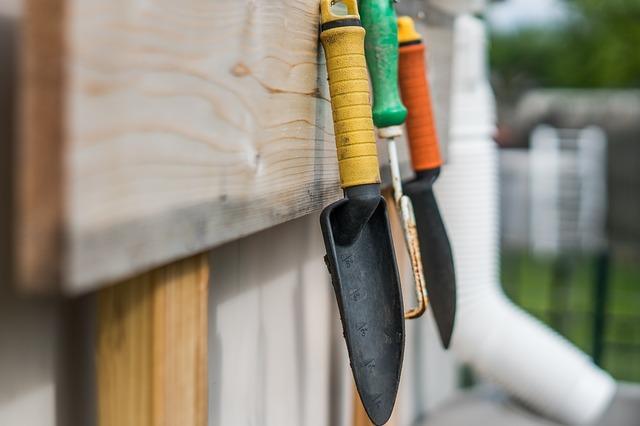
Did you know that growing your own herbs can reduce your grocery bill by up to 30% while enhancing the flavor of your meals? Beyond economics, cultivating herbs at home offers a rewarding blend of sensory delight and practical utility. Whether you’re a seasoned gardener or a curious beginner, mastering the art of growing herbs can transform your cooking and your living space. Here are top tips to ensure your herb garden thrives this summer.
Choosing the Right Herbs for Your Space
Not all herbs are created equal when it comes to growing conditions. Some flourish indoors on a sunny windowsill, while others demand more space and sunlight outdoors.
- Consider Your Environment: Basil, parsley, and cilantro tend to thrive in full sun, requiring at least 6 hours of direct light per day. On the other hand, mint and chives can tolerate partial shade and are more forgiving if your garden spot doesn’t get intense sunlight.
- Select Herbs According to Usage: Think about what you cook most often. If you enjoy Italian cuisine, basil, oregano, and rosemary are excellent choices. For fresh salads and teas, parsley, mint, and lemon balm are ideal.
- Start with Easy-to-Grow Varieties: For beginners, herbs like chives, mint, and thyme have robust growth habits and tolerate a range of conditions, providing a confidence boost as you develop your green thumb.
Preparing the Soil and Containers
Healthy soil is the cornerstone of any successful garden, and herbs are no exception.
- Use Well-Draining Soil: Most herbs prefer soil that drains well to prevent root rot. A mix of potting soil with added perlite or sand can improve aeration.
- Choose Appropriate Containers: If growing herbs indoors or on a balcony, opt for pots with drainage holes. For outdoor gardens, raised beds or garden plots with loosened soil work well.
- Consider Soil pH: Most herbs prefer slightly acidic to neutral soil, with a pH between 6 and 7. Testing your soil and amending it if necessary can enhance growth significantly.
Watering Wisely
Water is essential, but overwatering is one of the most common mistakes herb growers make.
- Establish a Watering Routine: Most herbs like the soil to dry out slightly between waterings. Stick your finger about an inch into the soil; if it feels dry, it’s time to water.
- Water at the Base: To reduce the risk of fungal diseases, water the soil directly rather than the leaves.
- Adjust for Climate and Container Size: Pots dry out faster than garden beds, so monitor moisture levels more frequently in containers, especially in warmer conditions.
Maximizing Sunlight Exposure
Sunlight is the primary energy source for photosynthesis, so providing ample light is critical.
- Position Herbs Strategically: South-facing windows are ideal for indoor herbs, while outdoor plants should be placed where they receive morning sun and some afternoon shade if temperatures soar.
- Supplement with Grow Lights: If natural light is limited, especially indoors, consider using LED grow lights. Studies show that proper artificial lighting can increase herb growth rates by up to 25%.
- Rotate Plants Regularly: Turning pots every few days ensures even light distribution and prevents plants from leaning towards a single light source.
Pruning and Harvesting for Continued Growth
Proper pruning encourages bushier growth and prevents herbs from becoming leggy or flowering prematurely.
- Pinch Back Regularly: For herbs like basil and mint, pinching back the tips once the plant reaches about six inches tall promotes branching.
- Harvest Smartly: Use scissors to snip leaves in the morning when oils are most concentrated. Avoid removing more than one-third of the plant at once to sustain healthy regrowth.
- Remove Flower Buds: Unless you want seeds, snip flower buds to keep energy focused on leaf production, which is typically the part you use in cooking.
Pest Management Without Chemicals
Herbs are relatively pest-resistant, but they can still fall prey to aphids, spider mites, and fungal diseases.
- Encourage Beneficial Insects: Ladybugs and lacewings prey on common herb pests. Planting companion flowers like marigolds nearby can attract these helpful insects.
- Use Natural Remedies: A simple spray of diluted neem oil or insecticidal soap can manage infestations effectively without harsh chemicals.
- Maintain Air Circulation: Proper spacing between plants reduces humidity and minimizes fungal issues.
Practical Tips for Success
- Label Your Plants: Use waterproof labels to keep track of herb varieties, especially if you’re growing multiple types.
- Keep a Growth Journal: Document watering schedules, pruning dates, and any issues to refine your care routine over time.
- Experiment with Propagation: Many herbs, such as basil and mint, root easily from cuttings, allowing you to expand your garden without additional purchases.
- Rotate Crops Seasonally: To prevent soil depletion and pest buildup, rotate your herbs or refresh the soil annually.
Growing your own herbs combines the satisfaction of nurturing life with the practical benefits of fresh, flavorful ingredients at your fingertips. By selecting the right varieties, preparing your soil carefully, managing water and light effectively, and practicing mindful pruning and pest control, your herb garden can flourish and become a vibrant, aromatic addition to your home. Whether you aim to elevate your culinary creations or simply enjoy the calming presence of greenery, these tips set the foundation for a successful and rewarding herb-growing experience.

